Best Michigan Colleges

How serious is Michigan about higher education? The first postsecondary institution in the state, the University of Michigan Ann Arbor was founded in 1817. That's a full two decades before Michigan became a state. From a large community college system to numerous public and private universities to small tribal colleges, Michigan offers a wealth of educational opportunities. This guide focuses on numerous aspects of those schools, including detailed rankings, how the state helps prepare students for college, what it will cost, and how much alumni earn. Read on to learn more about the broad spectrum of opportunities available at colleges in Michigan, including college planning programs unique to Michigan.
Best New York Colleges: Rankings
When so many options are available for a college education, it helps to see all the pertinent information in one place. Our rankings of Michigan colleges are calculated based on financial aid availability, tuition cost, graduation rate, student-to-teacher ratio, and similar criteria. This results in a comprehensive list of quality schools that can help students in their search for higher education.
Rankings Methodology
- Located in New York
- Public or private not-for-profit
- Institutionally accredited
- At least 10 total programs
- Median annual alumni earnings 10 years after entering the college
- In-state tuition and fees for undergraduates
- Student/teacher ratio
- 6-year graduation rate
- % of students receiving institutional financial aid (first-time, full-time undergrads)
- Average amount of institutional aid awarded per student (first-time, full-time undergrads)
- Availability of placement services upon completion
- Availability of academic/career counseling services
- Availability of employment services
- 3-year student cohort loan default rate
Integrated Postsecondary Education Data System (IPEDS): National Center for Education Statistics
Latest 'Final Release' data available as of Fall 2016 College Scorecard: U.S. Department of Education
2-Year Programs
Lansing Community College
Washtenaw Community College
Delta College
Henry Ford Community College
Kellogg Community College
Alpena Community College
Schoolcraft College
Macomb Community College
Oakland Community College
Glen Oaks Community College
Gogebic Community College
Southwestern Michigan College
West Shore Community College
Mott Community College
Bay College
Kalamazoo Valley Community College
North Central Michigan College
Grand Rapids Community College
St Clair County Community College
Monroe County Community College
Muskegon Community College
Montcalm Community College
Mid Michigan Community College
Michigan Career and Technical Institute
Kirtland Community College
Bay Mills Community College
Wayne County Community College District
4-Year Programs
University of Michigan-Ann Arbor
Michigan Technological University
Albion College
Calvin College
Alma College
Michigan State University
Andrews University
Lawrence Technological University
Hope College
Concordia University-Ann Arbor
Kalamazoo College
Siena Heights University
University of Detroit Mercy
Kettering University
Spring Arbor University
University of Michigan-Dearborn
Western Michigan University
Aquinas College
College for Creative Studies
Cleary University
Northwood University-Michigan
Ferris State University
Wayne State University
Madonna University
Central Michigan University
Eastern Michigan University
Grand Valley State University
Oakland University
Adrian College
University of Michigan-Flint
Northern Michigan University
Kuyper College
Marygrove College
Lake Superior State University
Saginaw Valley State University
Rochester College
Davenport University
Cornerstone University
Walsh College of Accountancy and Business Administration
Finlandia University
Great Lakes Christian College
Olivet College
Baker College Center for Graduate Studies
Baker College of Flint
Baker College of Port Huron
Baker College of Clinton Township
Baker College of Muskegon
Baker College of Auburn Hills
Search & Compare Colleges in Michigan
Research into the best colleges in Michigan requires looking at the details. That's what students will get when they use this handy search tool, which allows for sorting based on tuition rates, types of institutions, acceptance rates, student populations and the like. Students can then compare the results side-by-side to help them choose which schools will go onto the short list of possibilities.
College Planning, Assistance and Outreach Programs in Michigan
Planning and preparing for college should start as early as possible, so students have a strong grasp of what their financial aid options will be, what classes they will need to take in order to pursue a chosen career, and how they might find more help with transitioning into the workforce upon college completion. These resources unique to Michigan can help students gain an understanding of what it takes to prepare and plan, from college admission to that first entry-level job.
College Application WeekThis program is part of an initiative to increase the number of low-income and first-generation students attending college. College Application Week is designed to ensure that each student submits at least one completed college application. During Michigan College Month, slated for October, high schools will host FAFSA drives to help ensure that every high school senior has filed this very important application. The events take place during school days and school hours, thus ensuring that more students have an opportunity to get those applications done.
College Cash CampaignWith college affordability as the biggest hurdle to postsecondary education, the Michigan College Cash Campaign aims to put a spotlight on the importance of the FAFSA during the college application process. The initiative aims to connect high school students with experts who can answer nuanced questions about the process, provide grants and scholarships to participating students, and help students make sense of the crucial financial documents that determine just how much they might owe out-of-pocket.
Michigan Veteran Education InitiativeThis program is designed to support military veterans during their transition to civilian life, including providing assistance during the pursuit of higher education. One-on-one support is available to veterans who enroll at Michigan schools, as well as their family members. Launched in 2014, the program works to coordinate services at the institutional, local, state and federal levels, all designed to provide strong assistance to veterans.
Cost Analysis of Colleges in Michigan
Several factors play into the cost of college in Michigan. Tuition and fees are heavily dependent upon whether a student is in-state or out-of-state. In addition, there are several criteria used to judge how much financial aid a student might receive to cover those costs. Here's a rundown of how the state of Michigan stacks up against the nation in these very important areas.
Source: CollegeBoard
Source: IPEDS
Source: IPEDS
* Institutional aid represents grant and scholarship funds directly awarded by a postsecondary institution.
* Financial aid data represents 4-year public and private nonprofit schools only.
Most Affordable Michigan Colleges
When it comes to affordable colleges in Michigan, a few schools stand out. The following rankings of the most affordable colleges in the state are based on net price-the cost of attendance minus the financial aid received-and also include information on how those colleges compare to the national average.
- 1.
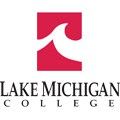 Lake Michigan College
Lake Michigan College
$6,704 - 2.
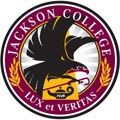 Jackson College
Jackson College
$6,812 - 3.
 Yeshiva Gedolah of Greater Detroit
Yeshiva Gedolah of Greater Detroit
$7,149
- 4.
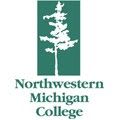 Northwestern Michigan College
Northwestern Michigan College
$8,333 - 5.
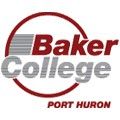 Baker College of Port Huron
Baker College of Port Huron
$9,678 - 6.
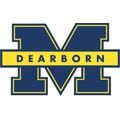 University of Michigan-Dearborn
University of Michigan-Dearborn
$9,800
Michigan College Net Price vs. National Average
Average Annual Net Price
Source: College Scorecard
Note: Rankings/data represent 4-year public and private nonprofit schools only.
Michigan Colleges with Top Alumni Earnings
College is an investment in the future. So what does that future look like for alumni? These colleges turned out the highest-paid alumni, based on their salaries ten years after graduation. We've also compared those alumni earnings with the national average, to give aspiring students a better idea where their income might fall after graduation.
- 1.
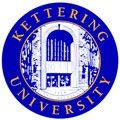 Kettering University
Kettering University
$74,900 - 2.
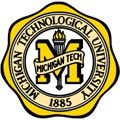 Michigan Technological University
Michigan Technological University
$60,100 - 3.
 University of Michigan-Ann Arbor
University of Michigan-Ann Arbor
$57,900
- 4.
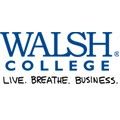 Walsh College of Accountancy and Business Administration
Walsh College of Accountancy and Business Administration
$54,500 - 5.
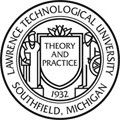 Lawrence Technological University
Lawrence Technological University
$53,700 - 6.
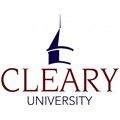 Cleary University
Cleary University
$50,500
Michigan Alumni Salaries vs. National Average
Annual Median Earnings 10 Years After Entering College
Source: College Scorecard
Note: Rankings/data represent 4-year public and private nonprofit schools only.
Colleges in Michigan With Least Alumni Debt
College affordability and how much alumni make years after graduation, are both aspects that matter. Another consideration is the amount of debt students might carry when their studies are over. These colleges have the lowest student debt among their alumni. Students can also see how that debt looks next to the national average of all colleges and universities.
- 1.
 Compass College of Cinematic Arts
Compass College of Cinematic Arts
$10,928 - 2.
 Lake Michigan College
Lake Michigan College
$15,587 - 3.
 Northwestern Michigan College
Northwestern Michigan College
$15,888
- 4.
 Walsh College of Accountancy and Business Administration
Walsh College of Accountancy and Business Administration
$16,485 - 5.
 Siena Heights University
Siena Heights University
$18,750 - 6.
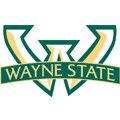 Wayne State University
Wayne State University
$21,500
Michigan College Grad Debt Vs. National Average
Median Federal Student Loan Debt After Graduation
Source: College Scorecard
Note: Rankings/data represent 4-year public and private nonprofit schools only.
Michigan Cost of Living: College Expenses Beyond Tuition
In most categories, the cost of living in Michigan falls just at or below the national average. An exception to this is housing, which is decidedly cheaper than the national average. That's excellent news for college students who will be paying rent or a mortgage on top of tuition. According to a quarterly review of all states by the Missouri Economic Research and Information Center, Michigan ranks 13th for the lowest cost of living in the nation. To learn more about where Michigan falls in the cost of living debate, check out the following table that drills deeper into the five largest metro areas of Michigan,
| area | composite index | housing | groceries | utilities | transportation | health care | misc. |
|---|---|---|---|---|---|---|---|
| Statewide Average | 93% | 84% | 98% | 97% | 100% | 101% | 94% |
| Ann Arbor | 105% | 117% | 110% | 94% | 98% | 125% | 95% |
| Benton Harbor | 91% | 78% | 99% | 100% | 101% | 95% | 92% |
| Detroit | 95% | 90% | 89% | 105% | 104% | 96% | 95% |
| Grand Rapids | 91% | 81% | 91% | 91% | 102% | 93% | 97% |
| Kalamazoo | 84% | 67% | 83% | 99% | 95% | 95% | 88% |
Source: The Council for Community and Economic Research
Michigan College Accreditation
Though there are several factors that play into which college a student might choose, there is one that students should see as non-negotiable, and that is accreditation. Accreditation means that a school has been reviewed by an independent accrediting body and found to meet the standards of a quality education.
Accreditation is vitally important for several reasons. Accreditation equals a standard of quality that is considered necessary for most professions; attending a school that does not meet this standard can mean sub-par learning, which can come back to haunt a student when they get out into the workforce. In fact, many employers will not accept a degree from a college that has not gained accreditation. In terms of financial aid, only accredited schools get the best benefits from the federal government; that means students who choose to attend a college that is not accredited can expect to pay much more.
Many colleges in Michigan seek accreditation through the Higher Learning Commission, which is a member of the North Central Association of Colleges and Schools In addition to regional accreditation of a school as a whole, there is also programmatic accreditation through other entities. Here are a few examples:
- The Michigan State University College of Law is accredited by the American Bar Association, Council of the Section of Legal Education and Admissions to the Bar
- Lawrence Technological University is accredited by the National Association of Schools of Art and Design, Commission on Accreditation
Popular College Cities in Michigan
Ann Arbor
Lovely Ann Arbor is home to five universities and one bustling community college. In 2016, NerdWallet named Ann Arbor one of the best cities for women in the workforce, and Forbes named it one of the top 20 happiest cities to work in. Many other claims to fame abound, leading to high hopes for potential students who want to attend the fine institutions of higher learning in the area.
| College Name | School Type | Annual Net Price | Annual Median Earnings 10 Years After College Only includes former students who received federal financial aid. |
|---|---|---|---|
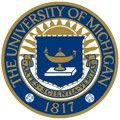 University of Michigan University of Michigan |
Public | $16,287 | $57,900 |
| Founded in 1817 and moved to Ann Arbor in 1837, the University now includes 19 Colleges, including schools of medicine, dentistry, pharmacy and law. Over 43,000 students currently attend the university, served by over 7,000 faculty members. The most popular degrees include business, psychology, economics, political science, biopsychology, cognition and neuroscience. | |||
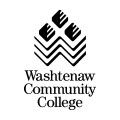 Washtenaw Community College Washtenaw Community College |
Public | $6,183 | $27,200 |
| Serving southeast Michigan, WCC emphasizes convenience for all students with night, weekend and online classes. Over 18,000 students register for classes each year, thousands more enroll in economic and development classes, and the average class size is only 23 students. The open-door admissions policy has been in place for over 40 years. | |||
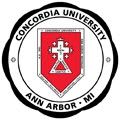 Concordia University Ann Arbor Concordia University Ann Arbor |
Private not-for-profit | $18,611 | $39,000 |
| This private, liberal arts university was founded by Lutherans in 1963 as a junior college; today the undergraduate program offers over 50 majors and 50 minors, with degrees in education, business, the arts, the sciences, communication and church work. Accelerated and graduate degrees are also available. The school is growing fast, with total enrollment up by 35 percent between 2013 and 2016. | |||
Grand Rapids
Grand Rapids defines itself as a "college town" for good reason: at least 15 institutions of higher learning serve tens of thousands of students in the metro area. In addition, those who graduate from those schools and choose to stay in the area will be happy to learn that Grand Rapids is one of the U.S. cities leading the current economic recovery. From large universities to tiny religious colleges, Grand Rapids offers a wealth of education to choose from on the way to an exciting career.
| College Name | School Type | Annual Net Price | Annual Median Earnings 10 Years After College Only includes former students who received federal financial aid. |
|---|---|---|---|
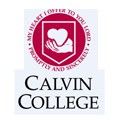 Calvin College Calvin College |
Private not-for-profit | $23,876 | $40,900 |
| This Christian liberal arts college sits on 400 bucolic acres and serves about 4,000 students. Those students can choose from over 100 majors, minors and programs; education, engineering and business are among the top choices. Founded in 1876, Calvin College boasts 99% of all graduates employed or in graduate school, over 50 percent of the student body involved in intramurals, and a student/faculty ratio of 13:1. | |||
 Davenport University Davenport University |
Private not-for-profit | $17,421 | $29,900 |
| Founded in 1866, this private non-profit university serves nearly 9,000 students in more than 50 undergraduate and graduate programs. Campuses are spread across the state, and there is a strong online presence as well. The school offers Colleges of Business, Technology, Health Professions, Urban Education and Arts and Sciences, reaching out to students who have a wide range of interests and professional goals. | |||
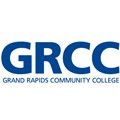 Grand Rapids Community College Grand Rapids Community College |
Public | $4,709 | $28,200 |
| Serving almost 30,000 students, the state-of-the-art learning spaces at GRCC are tailored to those seeking liberal arts education, occupational courses, adult education or skilled training. One in three high school students in Kent County choose to begin their education at GRCC, and each year over 5,000 transfer to four-year colleges. An intimate class size of 22.9 students ensures each person receives appropriate attention from the highly-trained faculty. | |||
Source: College Scorecard
Michigan College Resources
Students who are interested in attending Michigan colleges can find a great deal of information through resources specifically tailored for Michigan students. Here are some of the best.
This is the coordinating board for the state's 15 public universities. It is very politically active, seeking legislation that will benefit the member colleges.
Michigan College Access NetworkThe mission of MCAN is to increase college readiness, participation and completion, with a special emphasis placed on low-income students, first-generation college students and students of color.
Michigan Colleges AllianceFounded in 1949, this alliance is comprised of 15 independent colleges and universities throughout the state. The organization works to engage students, prepare them for employment and encourage them to stay in the state after graduation.
Michigan Education Savings ProgramThis important savings program offers numerous fund options to help students pay their way through college. Account holders can use the website to make important decisions on investments in the fund.
Midwestern Higher Education CompactThe MHEC aims to enhance affordability of member colleges, improve productivity and provide greater connectivity between higher education and the workforce. Michigan has been a state member since 1990.
Michigan Independent Colleges and UniversitiesRepresenting not-for-profit institutions, the organization serves its member institutions through advocacy, public policy development and government relations.
Michigan Transfer NetworkThis network allows students, advisors and educators to view transfer course equivalencies. Detailed information on the state transfer agreement can also be found here.
MI Student AidThe Student Financial Services Bureau, a part of the Michigan Department of Treasury, provides a wealth of information for students and parents on the financial aid options available for higher education.
Pure Michigan Talent ConnectCollege or trade school graduates can turn to this comprehensive site to learn about exciting careers in the state, as well as open job opportunities.
LearnHowToBecome.com is an advertising-supported site. Featured or trusted partner programs and all school search, finder, or match results are for schools that compensate us. This compensation does not influence our school rankings, resource guides, or other editorially-independent information published on this site.
View the most relevant programs for your interests and compare them by tuition, acceptance rate, and other factors important to you.